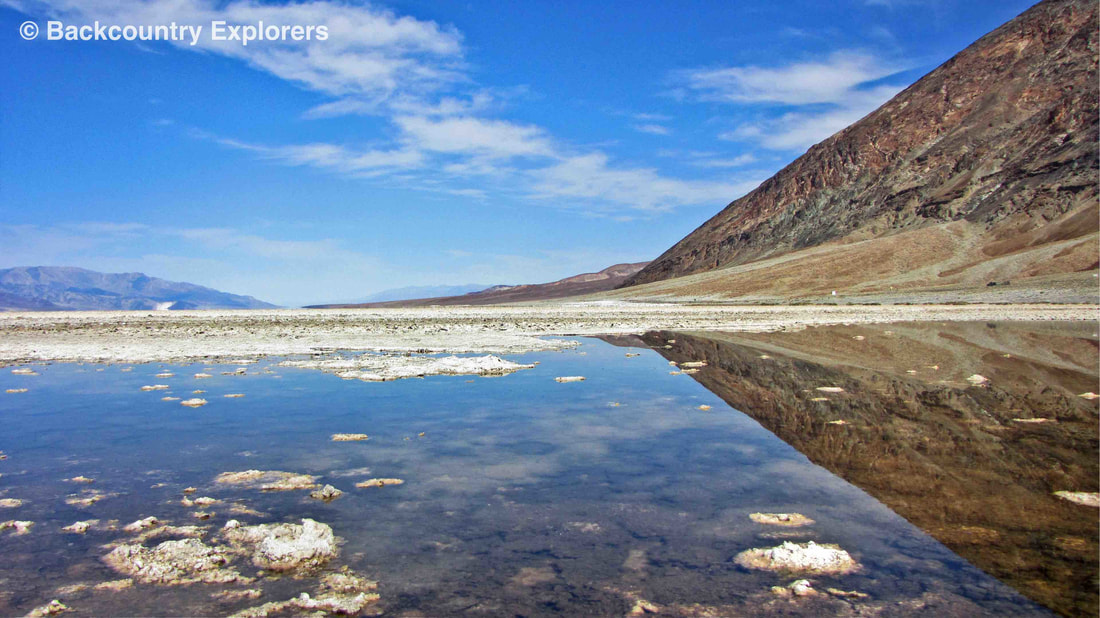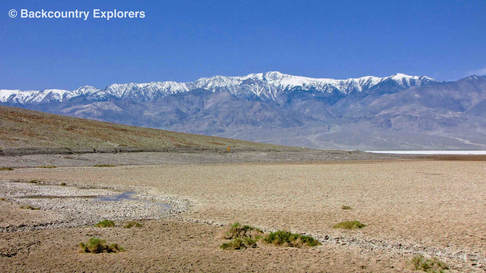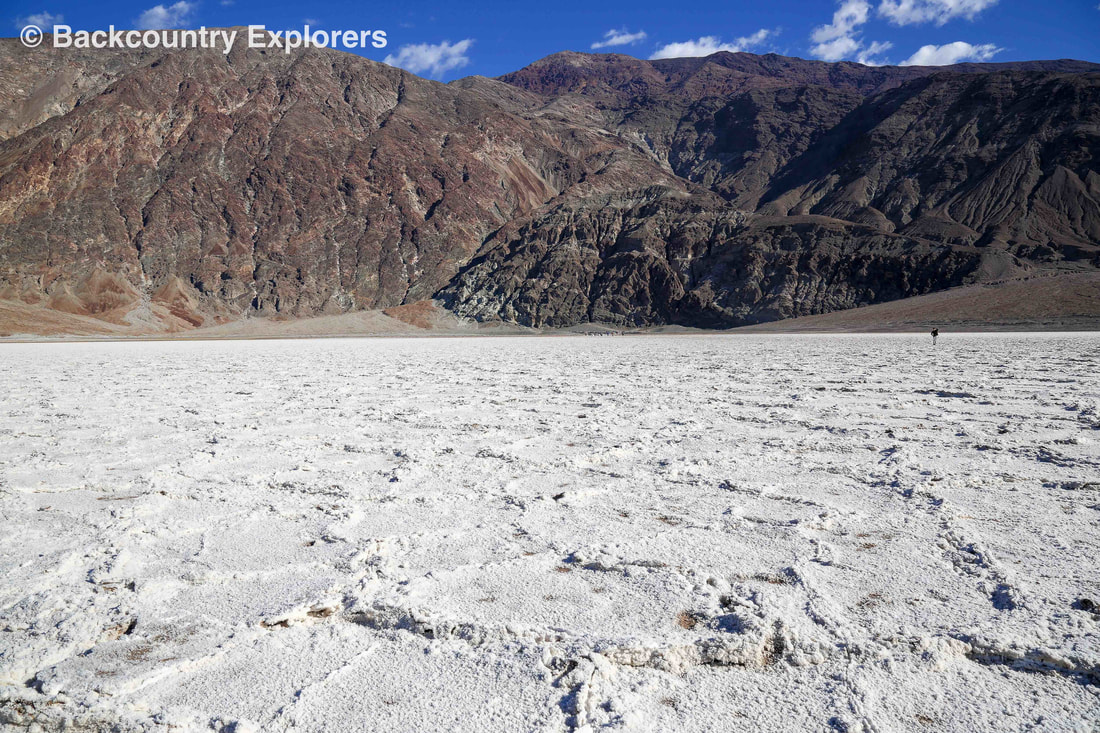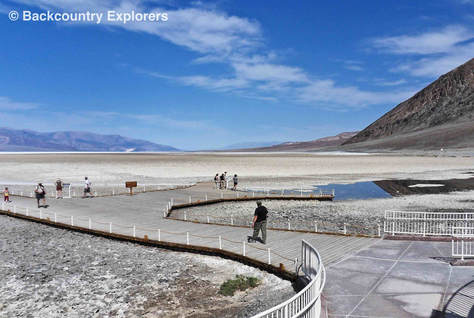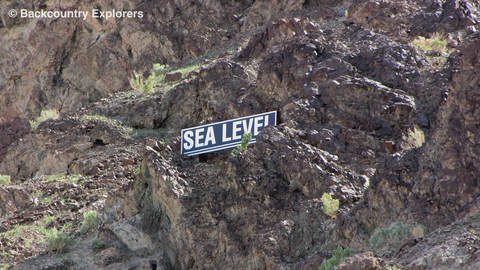Badwater, Death Valley
GPS: 36.250278, -116.825833
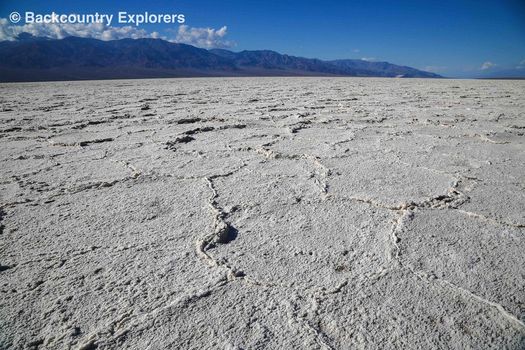
Badwater Basin is an endorheic basin in Death Valley noted as the lowest point in North America, with a depth of 282 ft below sea level. Mount Whitney, the highest point in the contiguous 48 United States, is only 84.6 miles to the Northwest.
The site itself consists of a small spring-fed pool of "bad water" next to the road in a sink; the accumulated salts of the surrounding basin make it undrinkable, thus giving it the name. The pool does have animal and plant life, including pickleweed, aquatic insects, and the Badwater snail.
Adjacent to the pool, where water is not always present at the surface, repeated freeze–thaw and evaporation cycles gradually push the thin salt crust into hexagonal honeycomb shapes.
At Badwater Basin, significant rainstorms flood the valley bottom periodically, covering the salt pan with a thin sheet of standing water. Newly formed lakes do not last long though, because the 1.9 in of average rainfall is overwhelmed by a 150 in annual evaporation rate. This is the greatest evaporation potential in the United States, meaning that a 12 ft lake could dry up in a single year. When the basin is flooded, some of the salt is dissolved; it is redeposited as clean crystals when the water evaporates.
A popular site for tourists is the sign marking "sea level" on the cliff above the Badwater Basin.
This text taken in part from Badwater Basin by Stan Shebs and is licensed under Creative Commons Attribution-ShareAlike License
The site itself consists of a small spring-fed pool of "bad water" next to the road in a sink; the accumulated salts of the surrounding basin make it undrinkable, thus giving it the name. The pool does have animal and plant life, including pickleweed, aquatic insects, and the Badwater snail.
Adjacent to the pool, where water is not always present at the surface, repeated freeze–thaw and evaporation cycles gradually push the thin salt crust into hexagonal honeycomb shapes.
At Badwater Basin, significant rainstorms flood the valley bottom periodically, covering the salt pan with a thin sheet of standing water. Newly formed lakes do not last long though, because the 1.9 in of average rainfall is overwhelmed by a 150 in annual evaporation rate. This is the greatest evaporation potential in the United States, meaning that a 12 ft lake could dry up in a single year. When the basin is flooded, some of the salt is dissolved; it is redeposited as clean crystals when the water evaporates.
A popular site for tourists is the sign marking "sea level" on the cliff above the Badwater Basin.
This text taken in part from Badwater Basin by Stan Shebs and is licensed under Creative Commons Attribution-ShareAlike License
